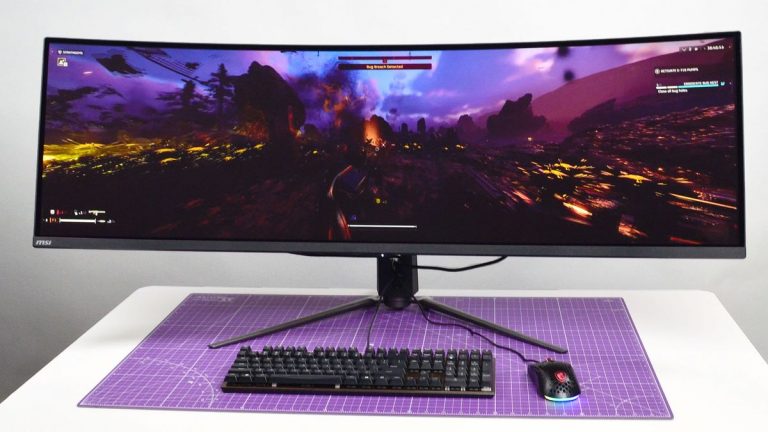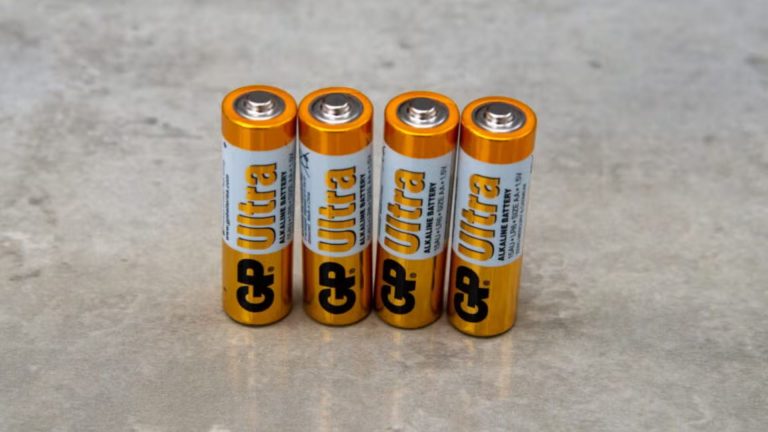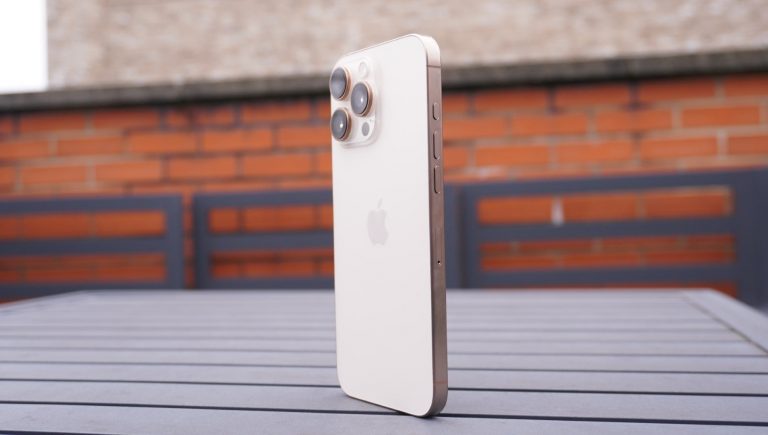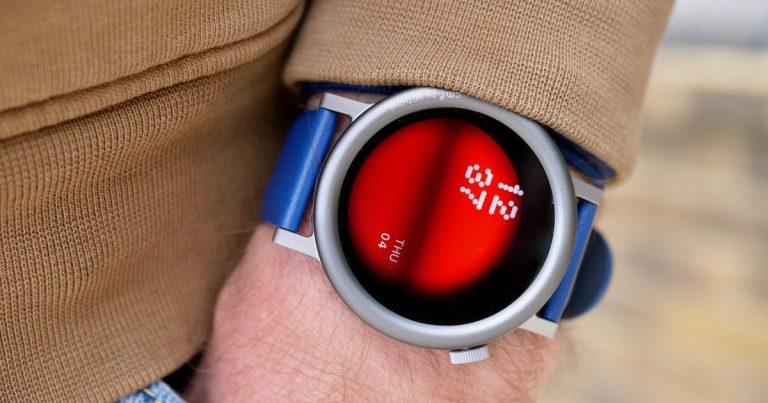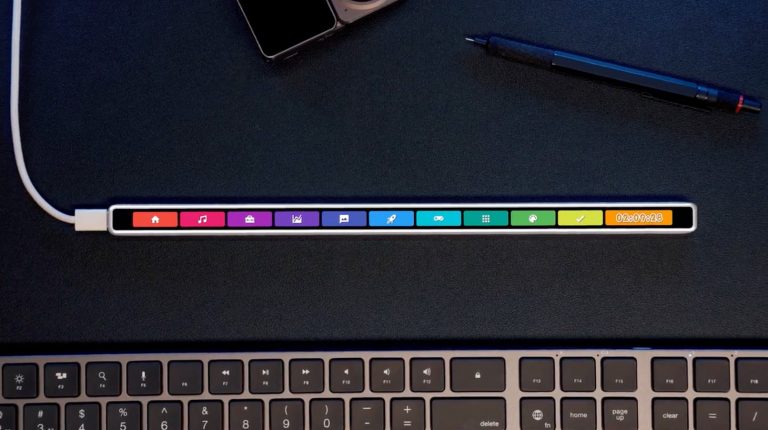A Good Laptop With Lackluster AI Capabilities
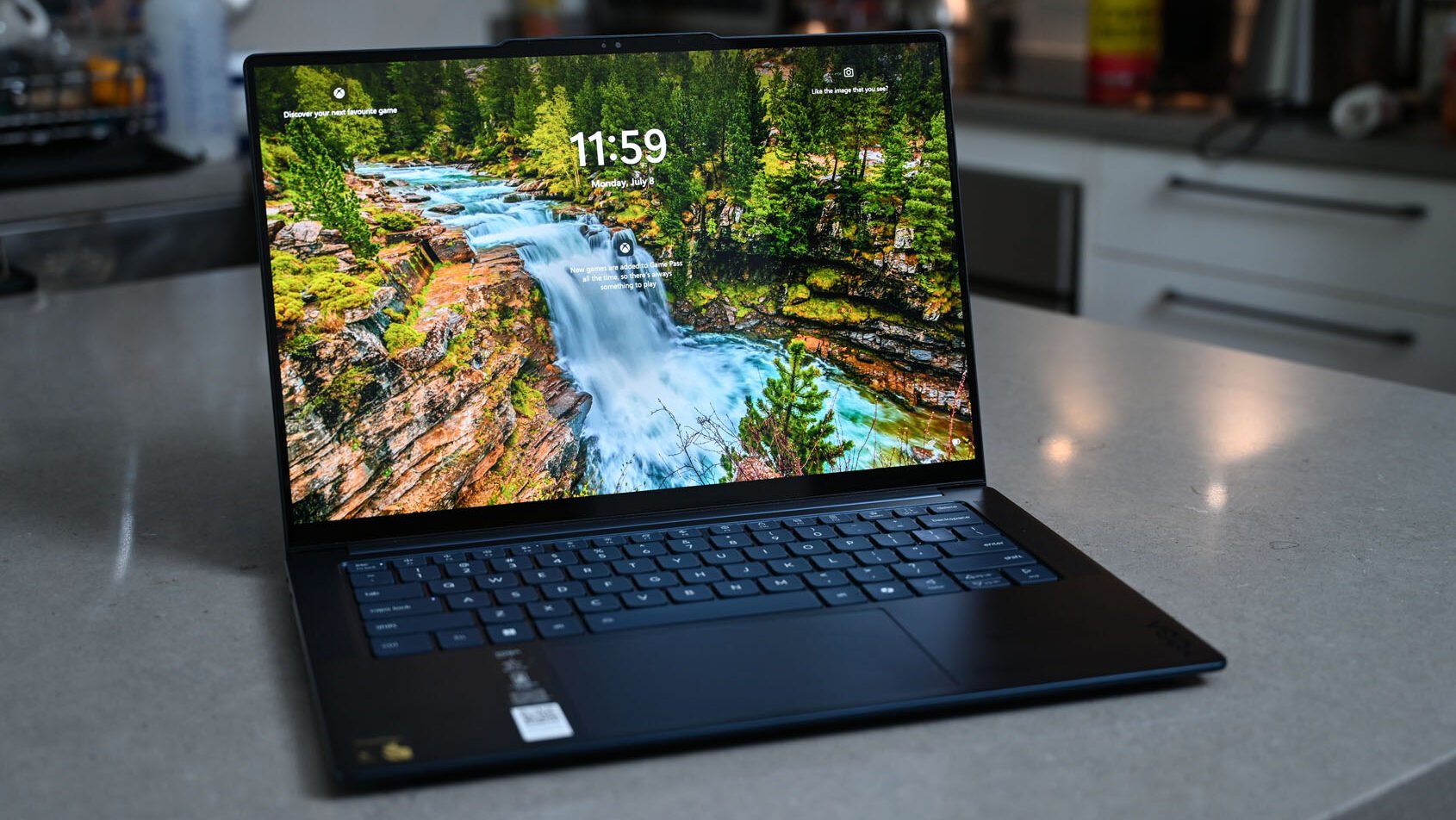
Smarter chatbots, improved coding capabilities, and slicker video conferences and streams – for better or worse, 2024 is the year of artificial intelligence, and everyone’s hopping on the bandwagon. What started as a cool little demo a year ago has exploded to the point where nearly every laptop that’s come across my desk this year has the Copilot button squeezed between the alt and arrow keys. Microsoft is showing no signs of letting its foot off the gas as it launches its next phase of AI domination, its Copilot + laptops. I got to experience a little sample of the future with the Lenovo Yoga Slim 7x, one of the first laptops featuring one of the new Snapdragon X Elite chips.
My $1,199 review unit is a knockout in terms of its chassis, which is super light, durable, and elegant. It’s got an OLED display that’s bright and vivid in equal parts. And for once, Qualcomm is putting in some work performance-wise, coming within striking distance of some of the more powerful Intel-based systems out there.
The Yoga Slim 7x is a great mid-tier laptop with serviceable performance, decent battery life, and a pretty display in a sleek chassis. It also has a heaping helping of Microsoft’s AI special sauce, which, at this point, feels seriously undercooked. However, if you’re eager to dive into the artificial intelligence pool, the Slim 7x is a great choice.
However, I was thoroughly disappointed with the battery life. And while the laptop lasted more than eight hours, it’s nowhere near the all-day endurance Lenovo and Qualcomm claim. Plus, with the Yoga Slim 7x running on ARM architecture, some apps can’t run despite the Prism emulator. But what’s even more annoying is that the AI experience isn’t all that different than what you’d find on regular laptops. For an AI-first laptop, I expected more than the typical image creation and video conferencing effects we’ve seen everywhere.
Pros
- Slim and Portable Design
- Lovely OLED screen
- Great Feeling Keyboard
Cons
- Underwhelming battery life
- Unimpressive AI Features
Lenovo Yoga Slim 7x Design
A laptop that’s as durable as it is pretty
As much as I love a big, beefy desktop replacement. I will never kick something as lissome and elegant as the Yoga Slim 7x. It’s an absolutely lovely device with a Cosmic Blue, sandblasted anodized aluminum chassis sporting Lenovo’s Comfort Edge design – a fancy way to say the edges and corners are rounded. And as pretty as the laptop is in dark blue, it makes me yearn for the days when Lenovo made laptops in Clementine Orange, a wild time when laptop OEMs weren’t afraid to paint with all the colors of the wind. But I digress.
Whether a purse, briefcase, book bag, or messenger bag, the 2.8-pound, 12.8 x 8.9 x 0.51-inch Yoga Slim 7x can fit into almost anything. My large Telfar bag practically enveloped the laptop, and I barely felt it as I traveled to a friend’s house. It’s ideal for mobile professionals. Despite its waif-like dimensions, the laptop is tough with MIL-STD-810H certification, meaning the Slim 7x can take a few bumps and dings.

But with a laptop that is so slender, there’s bound to be a sacrifice or two. For the Slim 7x, it comes in the ports. The notebook only has three USB-C Gen 3 ports and a physical camera shutter switch. That’s it. If you’re still using wired headphones, this isn’t the laptop for you, or it’s time to invest in a pair of wireless headphones or earbuds.
Lenovo makes some of the best keyboards in the game, and the Slim 7x is no different. With their 1.5-millimeter key travel, the smile-shaped keys are like tiny trampolines, propelling my fingers to the next key. The LED backlighting is fine; you can see the keys in a dark room.
With laptops this slim, it can be hard to keep things cool. Lenovo is trying to remedy this problem by installing a pair of fans. They do an okay job as the touchpad, center of the keyboard, and bottom of the notebook measured 87, 99, and 105 degrees Fahrenheit, respectively.
Lenovo Yoga Slim 7x Display, Webcam, and Audio
You won’t want to take your eyes off the gorgeous display
If you’re going to give me a glossy display, please make it OLED or Mini-LED. I want to sear my eyeballs with bright, vibrant colors. Lenovo obliged me with the Slim 7x’s 14.5-inch, 2944 x 1840 OLED touch panel. It’s simply stunning to look at, and with its 16:10 aspect ratio, there’s more screen real estate. The 90Hz refresh rate makes for smoother results when watching movies or reading text. It also makes for a decent gaming experience.
The color in the “Neptune Frost” trailer was impressive, delivering beautiful shades of yellow, red, blue, and green. Fine details, such as the tiny bumps on actor Cheryl Isheja’s forehead and the thin line of Sunflower Yellow eyeliner, were easy to see. Averaging 865 nits, the panel is plenty bright and suitable for use in direct sunlight. The 10-point capacitive touch screen is quick and responsive, although I don’t see the point if you don’t have a stylus.
The 1080p webcam is good. It had no problem reproducing the exact shade of pink of the shirt I was wearing, with detail sharp enough to show off the little beading. Zooming in on my face revealed a blurry mosaic effect that wasn’t too appealing. Still, it’s okay for video conferencing or snapping a quick selfie.
Don’t expect much from the Slim 7x’s 2W quad speakers (two tweeters, two woofers). Even with the Dolby Atmos software, the top and bottom-mounted stereo speakers don’t have enough oomph to make a difference. The system struggled to reproduce the bass on Flau’jae’s “Came Out A Beast” with brassy, tinny trumpets, French horns, and an almost non-existent high hat. However, both Flau’jae and Lil Wanye’s vocals were good.
Lenovo Yoga Slim 7x Performance
Qualcomm makes a play to be a competitor.
Lenovo hooked the Yoga Slim 7x up with a 3.42-GHz Qualcomm Snapdragon X Elite X1E-78-100 Oryon processor with 16GB of LPDDR5X 8448MHz dual channel RAM, a 512GB PCIe M.2 Gen 4 PCIe SSD, a Hexygon NPU, and an integrated Qualcomm Adreno GPU. The CPU is the lowest rung on Qualcomm’s X Elite ladder, lacking a dual-core boost mode. That means it’s suited for your typical productivity work (i.e., word processing, spreadsheets, presentations, etc.), but some of those loftier gaming claims? Not so much.
The other wrinkle to this setup is that the Snapdragon chips are ARM64 SoCs. As such, many of your favorite apps and software don’t play nice with ARM, which requires using the Prism x64-x86 emulator. But since ARM has been the proverbial fetch that wasn’t going to happen (Remember Windows RT?), there are still quite a few apps that won’t run on the Snapdragon SoC. But those that do run pretty well.
In practice, the Yoga Slim 7x is a peppy performer. I didn’t experience any signs of slowdown while writing this review. It plugged along, although I had 55 tabs open in Google Chrome and my usual mix of G-Suite apps, YouTube videos, news, and social media sites.

I wasn’t expecting great performance from the Slim 7x on the synthetic benchmarks, as performance hasn’t always been Qualcomm CPUs’ strong suit. The laptop performed better than expected, with results on par with a U-series Intel Core i7 processor. There were a few moments when the Slim 7x came close to matching an H-series chip but fell short. For instance, the laptop repeatedly took over four minutes to render images on the CPU and GPU, while other Intel-powered systems completed the task faster. I saw similar results on both the Geekbench 6 and Cinebench R23. The Slim 7x had the worst performance on the Handbrake test, taking more than seven minutes to transcode a 4K video to 1080p.
Qualcomm stated that their integrated chips aren’t really for gaming. However, I’ve successfully played taxing titles such as God of War and Control on a top-tier Snapdragon Elite X1E-84-100 CPU system. And while that notebook has the same integrated GPU as the Slim 7x, the former has more TFLOPs than the latter, 4.6 to 3.8. The difference is palpable. After a few adjustment adjustments on the higher-end notebook, it was smooth sailing, and I handed out beatdowns without a hint of stutter. This wasn’t the case with the Slim 7x. While I handed Chronos his ass in Hades II, God of War was a stuttering mess, as was Control.
Lenovo Yoga Slim 7x AI
AI isn’t ready for its close-up yet
AI this, AI that. Call me unimpressed. At the same time, I found some things helpful, such as removing the background in Adobe Photoshop and editing it in CapCut. I’m still not convinced this warranted a whole line of AI-first laptops. Take Copilot +, for example. Cocreator, which allows you to create an AI-assisted picture via text prompts, is interesting but unnecessary. Windows Studio Effects smooths out your video conferencing experience, blurring or enhancing backgrounds and auto framing so you’re always in the shot.
Again, it’s nice to have but not necessarily necessary, especially since quite a few programs can do the same. Live Translate is the most useful of the Copilot + as it translates in real-time. However, I found fast speakers easily tripped up the translation. It’s an unimpressive start to such a highly-hyped launch. But AI is still a relatively young technology, so it’s bound to get better as time passes (I hope).
Lenovo Yoga Slim 7x Battery
I expected more
I’m so used to Qualcomm laptops delivering all-day battery life at the expense of performance. I was taken aback when the inverse happened on the Slim 7x. Don’t get me wrong, I used the laptop daily, lasting over 10 hours. I expected a shorter time on the first day as I ran benchmarks. However, after that, I was often surprised when the low battery warning popped up while writing the review, listening to music, browsing social media, streaming episodes of Supacell on Netflix, and taking video meetings. I will give the caveat that if I had the brightness turned up to 100%, it wouldn’t have that big a difference.

Verdict
Score: 3.5/5
I wish the Lenovo Yoga Slim 7x were a regular/schmegular Windows 11 laptop because it has a lot of good things going for it. Number one is the design. It’s incredibly light yet durable, and I love the color. Next, you’ve got the OLED screen that is a sumptuous feast for the eyes, although I can do without a penless touch panel. Even though it’s a lower-tier Snapdragon X Elite chip, I’m impressed at how well it performed, putting up numbers comparable to those of an Intel U-series laptop and making it ideal for most productivity tasks. And if I got 10 hours of battery life on an Intel laptop, I’d be relatively happy.
But this isn’t an Intel or even an AMD laptop. In an attempt to get on the frontlines of this AI craze, Qualcomm has put its eggs in ARM’s basket, and while it’s worked for Apple, I’m not sure it will work out for these Snapdragon chips. Yes, the performance is good, but using an ARM-based processor means you will be limited in what apps you can use. While some will work with the emulator, others won’t complete with error messages. But, the bigger sin is the battery life, far short of the all-day longevity that’s touted.
All of this is in pursuit of these AI-first laptops, which, in the grand scheme of things, AI is still very much in its infancy. While most people won’t say no to an NPU taking the heavy lifting on AI processes, with the current crop of AI-boosted apps and features, it doesn’t warrant a whole new line of chips—at least not yet. I mean, both Intel and AMD have NPUs. They’re even sporting Copilot buttons—like the Yoga Slim 7x and their ilk.
While $1,199 is reasonable for a mid-tier machine, I wouldn’t recommend the Slim 7x to just anyone. This is a laptop for first adopters who want to explore everything that AI, notably Microsoft’s brand of artificial intelligence, has to offer. Everyone else can get better performance and longer battery life with an Intel or AMD device.

